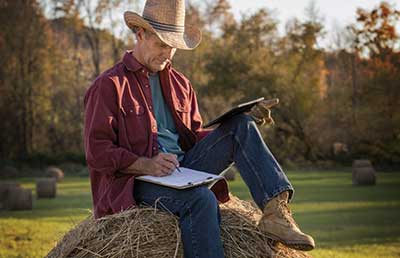Patrons May Lose Most of 199A for 2018

As part of the grain glitch fix in March of this year, a transition rule was included in the Code regarding qualified payments made by a cooperative with a year that began in 2017 and ended in 2018. This provision indicates that any payments received by a patron (farmer) during 2018 that is also included in the cooperatives taxable year ending in 2018 is not allowed to be used in calculating Section 199A.
The farmer will simply receive the DPAD passed through by the cooperative for that year (if any) and be allowed to only deduct that on their tax return. None of the qualified payments made to the farmer during the cooperatives fiscal year ending in 2018 are allowed for QBI.
Many cooperatives issued a Section 199 DPAD deduction in December of 2017. This means that these farmers got a deduction in 2017 when rates were higher, however, due to the transition provision, these farmers will perhaps not qualify for much, if any Section 199A deduction in 2018 AND not receive any DPAD from the cooperative since it was “pushed” out in 2017. This is what we may call a “double whammy”. The reason it may be so drastic is that many grain farmers receive most of the proceeds from their grain sales in the first few months of the year and then simply have little or no sales the remaining part of the year.
Let’s look at a couple of examples to see how this might affect a typical farmer:
Sam sells his grain to a cooperative that has a May 31, 2018 year-end. He normally sells $2 million of grain and 80% of the sales occur within the first five months of the year. In December, 2017, the cooperative issued a DPAD to him of $20,000. Sam’s QBI for 2018 before any cooperative adjustment is $300,000 and he pays wages of $50,000. However, he is not allowed to use 80% of the sales to calculate QBI (reduce by related expenses). This results in no Section 199A deduction on $240,000 of QBI leading to a gross deduction of $12,000 ($60,000 times 20%). This now has to be reduced by the lesser of 9% of $60,000 ($5,400) or 50% of $10,000 (assuming you get to reduce wages by the 80%). This reduction is $5,000 resulting in a final deduction of $7,000 plus any DPAD from the cooperative which may be zero since they passed it out in 2017.
Now that was the simplified version. What happens if most of the farmer’s income occurs during that period before the cooperative’s year-end and most of the expenses occur after that period (which would be very normal). Does that mean that the farmer now has a very large QBI loss which has to be carried forward into 2019 and thus the farmer starts deep in the hole. Here is an example:
Sam in our previous example has only $400,000 of expenses that happen during the first five months. Therefore, his net income during this period is $1,200,000 ($2M *80% less $400K). His loss after this date is now $900,000. This could mean that the $900,000 loss has to be carried forward into 2019 and he gets no QBI deduction until he nets at least $900,000.
Both of these examples are speculation on our part based on the current language in the code and the Joint Committee of Taxation technical explanations since we have no proposed regulations from the IRS yet dealing with any of this. Likely the first example will be the method used, but until we get guidance, no one really knows. However, the bottom line is that farmers who sell to a cooperative may not get the deduction they were planning on this year due to the transition rule.
This also means that the cooperative will need to report to the patron the amount of qualified payments made to the patron in 2018 that was included in the cooperative’s Section 199 computation from January 1, 2018 to the last day of the cooperative’s fiscal year ending in 2018.
Paul Neiffer is a certified public accountant and business advisor specializing in income taxation, accounting services, and succession planning for farmers and agribusiness processors. Paul is a principal with CliftonLarsonAllen in Walla Walla, Washington, as well as a regular speaker at national conferences and contributor at agweb.com. Raised on a farm in central Washington, he has been immersed in the ag industry his entire life, including the last 30 years professionally. Paul and his wife purchase an 180 acre ranch in 2016 and enjoy keeping it full of animals.

In previous posts, as long as the taxpayer stayed under the threshold and didn’t pay any wages, we didn’t have to worry about the amount of sales that they had with a coop. If this is the way we should be interpreting it now, if the taxpayer doesn’t pay any wages, will we need to back out grain sales to the Coop that fall withing the Coop’s fiscal year end?